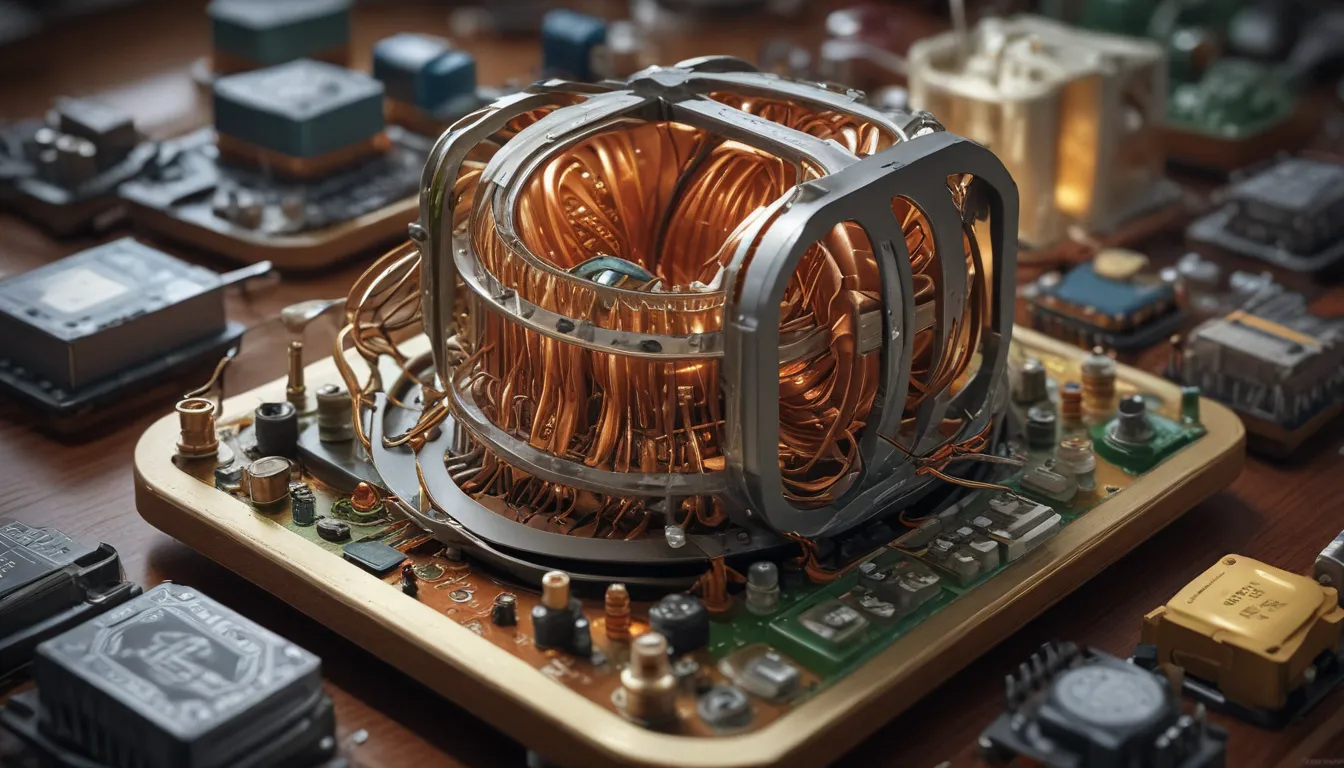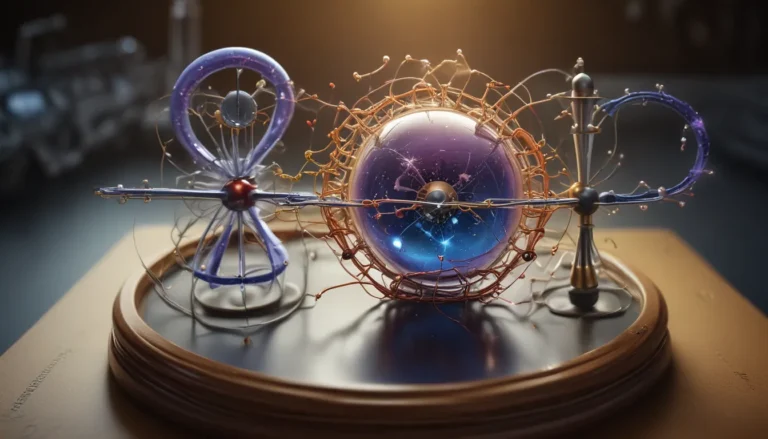A Note About Images: The images used in our articles are for illustration purposes only and may not exactly match the content. They are meant to engage readers, but the text should be relied upon for accurate information.
Electromagnetism is a captivating field of physics that unveils the hidden mysteries behind the behavior of electrical circuits. At the core of this intricate realm lies the concept of inductance, a fundamental property that shapes the functioning of various electronic devices and systems. While inductance may appear simple at first glance, it holds a plethora of fascinating facts that can spark curiosity and deepen your understanding of this phenomenon. In this article, we will embark on a journey through the enchanting world of inductance, exploring 13 mind-blowing facts that will leave you in awe of its profound implications. From its inception by Michael Faraday to its indispensable role in modern technology, let’s unravel the secrets of inductance and uncover the captivating truths that lie within.
The Enigmatic Power of Inductance
Inductance serves as a magical force within electrical circuits, storing and releasing energy through magnetic fields. This mystical property is essential for the operation of various devices, from motors and generators to your everyday phone charger. It acts as a hidden ingredient that breathes life into these technological marvels, showcasing the mesmerizing power of inductance in action.
Delving into the Essence of Inductance
Inductance stands as a cornerstone of electrical circuits, embodying the ability of a circuit element to store and release energy in the form of a magnetic field. Denoted by the symbol L and measured in henries (H), inductance is a vital component without which many electrical systems would cease to function effectively.
The Resilience of Inductance
One of the remarkable attributes of inductance is its innate ability to resist changes in current flow. This resistance to the flow of electric current manifests as self-induction, where an inductor generates a self-induced electromotive force (emf) that counteracts any variations in current. This enigmatic property underscores the resilience of inductance in maintaining the stability of electrical circuits.
Unveiling the Magnificent Interplay of Fields
The essence of inductance lies in the intricate interplay between electrical currents and magnetic fields. As current flows through a conductor, it generates a magnetic field around it, triggering the phenomenon of inductance. This mesmerizing interaction gives rise to the captivating world of electromagnetic forces that govern the workings of electrical systems.
Embracing Diversity in Electronics
Inductance permeates a diverse array of electronic components, ranging from coils and solenoids to transformers and inductors. These specialized components harness the power of inductance for energy storage, signal processing, and filtering, showcasing the versatility and indispensability of inductance in modern technology.
Harnessing the Power of Coils
The inductance of a coil is intricately linked to the number of turns within it, with the inductance being proportional to the square of the number of turns. This unique relationship enables precise control over the behavior of electrical circuits by adjusting the number of turns in a coil, demonstrating the intricate balance of inductance in shaping circuit dynamics.
Vitality of Inductance in Motors and Generators
Inductance serves as a vital element in the functioning of electric motors and generators, facilitating the conversion of electrical energy into mechanical energy and vice versa. By creating and manipulating magnetic fields, inductance plays a pivotal role in enabling the efficient operation of these essential devices.
Navigating the Realms of Circuit Delays
Inductance introduces delays in electrical circuits due to its self-induced voltage and resistance to changes in current. These delays can yield both advantageous and undesirable outcomes, influencing signal timing, distortion, and overall efficiency in diverse applications.
Energizing Storage Systems with Inductance
Inductors offer a gateway to energy storage systems, harnessing the energy stored within their magnetic fields. From inductance-based batteries to supercapacitors, these systems deliver high energy density, rapid charge-discharge capabilities, and enhanced efficiency compared to conventional energy storage technologies.
Illuminating the Path of Radio Frequency
Radio frequency (RF) circuits rely heavily on inductance for tuning, filtering, and impedance matching. By utilizing inductors to adjust resonant frequencies, filter out unwanted signals, and match impedances, RF circuits ensure optimal signal transmission and reception in wireless communication systems.
Embracing the Influence of Alternating Current
Inductance exerts a profound influence on the behavior of alternating current (AC) circuits, leading to phase shifts, reactance, and impedance variations. Understanding the intricacies of inductance in AC circuits is essential for enhancing performance and minimizing power losses in electrical systems.
Shielding Against Electromagnetic Interference
Inductors play a crucial role in reducing electromagnetic interference (EMI) by filtering out extraneous frequencies and preventing the spread of electromagnetic noise. These components are essential in ensuring the reliability and noise-free operation of electronic devices and systems.
Pioneering Wireless Power Transfer
Inductive coupling forms the foundation of wireless power transfer technology, enabling the wireless transmission of electrical energy between two coils. This groundbreaking technology allows for wireless charging of devices, eliminating the need for physical connections and revolutionizing the landscape of power delivery.
Embracing the Essence of Inductance
Inductance stands as a fundamental concept in physics and engineering, transcending boundaries across various fields, including telecommunications and electrical engineering. Its intrinsic value as a cornerstone of modern technology underscores the profound impact that inductance has on shaping our understanding of electromagnetism.
Concluding Thoughts
Exploring the realm of inductance unveils a treasure trove of captivating facts and insights that showcase the enchanting nature of electromagnetism. From Faraday’s visionary discoveries to the practical applications of inductance in everyday devices, the journey through the world of inductance is bound to inspire and enlighten. Whether you are a budding physicist, an aspiring engineer, or simply a curious mind eager to delve into the mysteries of the universe, the allure of inductance promises a captivating exploration into the realms of electricity and magnetism.
Indulge in Curiosity: FAQs About Inductance
-
What is inductance?
Inductance is the property of an electrical circuit or component that enables it to store energy in a magnetic field when current flows through it. -
What is the unit of inductance?
The unit of inductance is the Henry (H), named after Joseph Henry, a pioneer in the study of electromagnetism. -
How does inductance influence electric circuit behavior?
Inductance resists changes in current flow, resulting in delays in the response of the circuit to variations in voltage or current. -
What are some practical applications of inductance?
Inductance plays a vital role in transformers, motors, generators, telecommunication systems, and various electronic devices, including filters and oscillators. -
What is self-inductance?
Self-inductance is the property displayed by a coil or conductor that opposes changes in current flow, creating a counter electromotive force. -
How is inductance linked to magnetic fields?
An electric current passing through a conductor generates a magnetic field around it. Inductance quantifies the conductor’s ability to induce a magnetic field. -
Can inductance be altered?
Yes, inductance can be modified by adjusting circuit properties or changing the physical characteristics of the inductor, such as shape, size, or material composition. -
How is inductance represented in electrical circuits?
Inductance is depicted by the symbol “L” in electrical circuits and is measured in henries (H). -
Are there any drawbacks to inductance?
While inductance is a fundamental property in electrical systems, excessive inductance in a circuit can lead to issues such as voltage spikes, signal distortion, or power loss. -
Can you provide real-life examples showcasing the effects of inductance?
One practical example is the ignition system in an automobile, where an inductor, in the form of a coil, generates the high voltage required to ignite the fuel mixture.
Inductance embodies a mesmerizing fusion of science and technology, shaping the foundation of modern electrical systems and devices. By delving into the captivating world of inductance, you embark on a journey of discovery that unveils the profound mysteries of electromagnetic forces. So, embrace the allure of inductance, ignite your curiosity, and embark on a fascinating exploration into the realms of electromagnetism and beyond.






